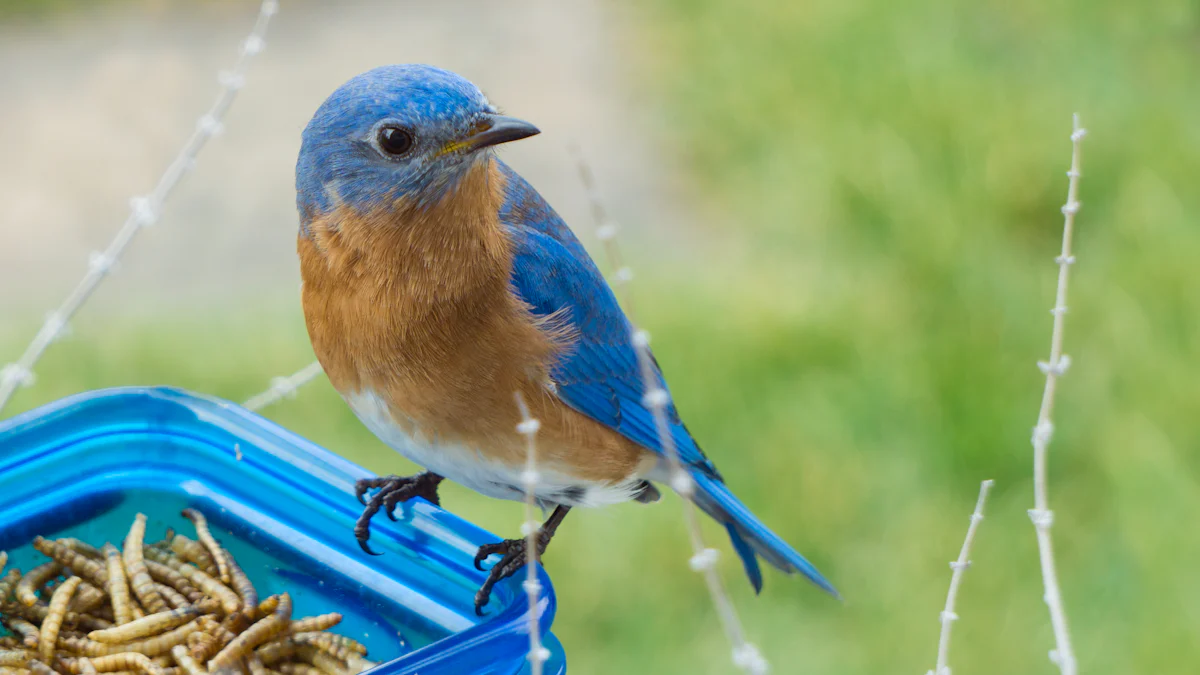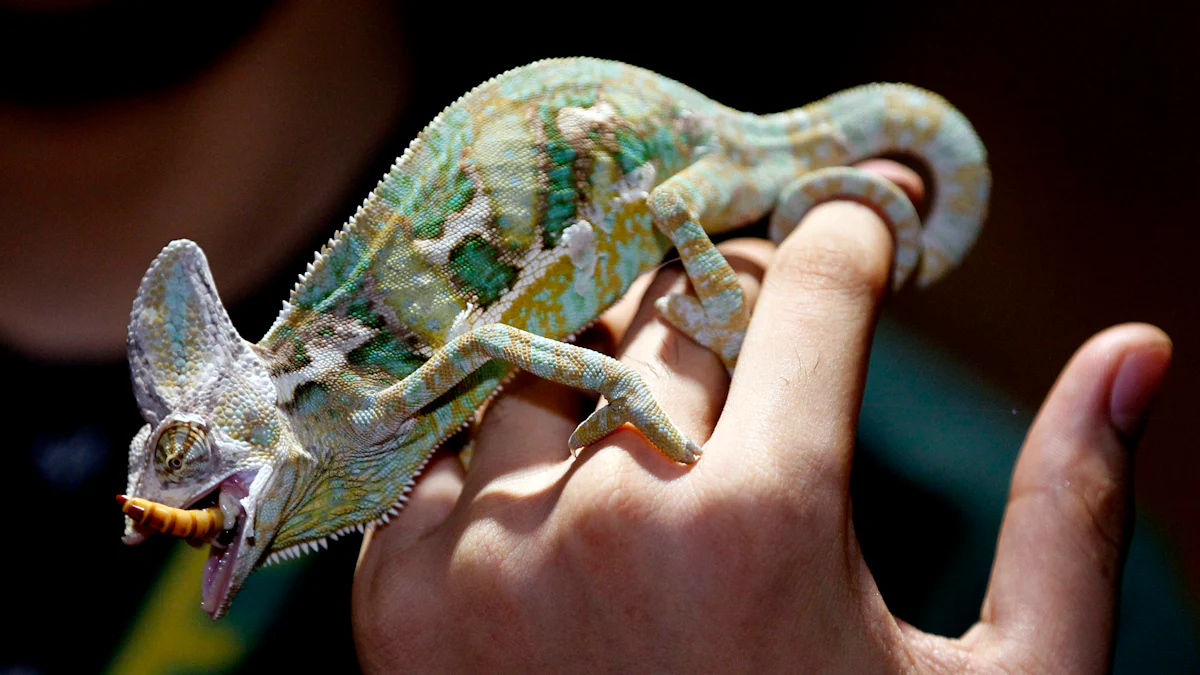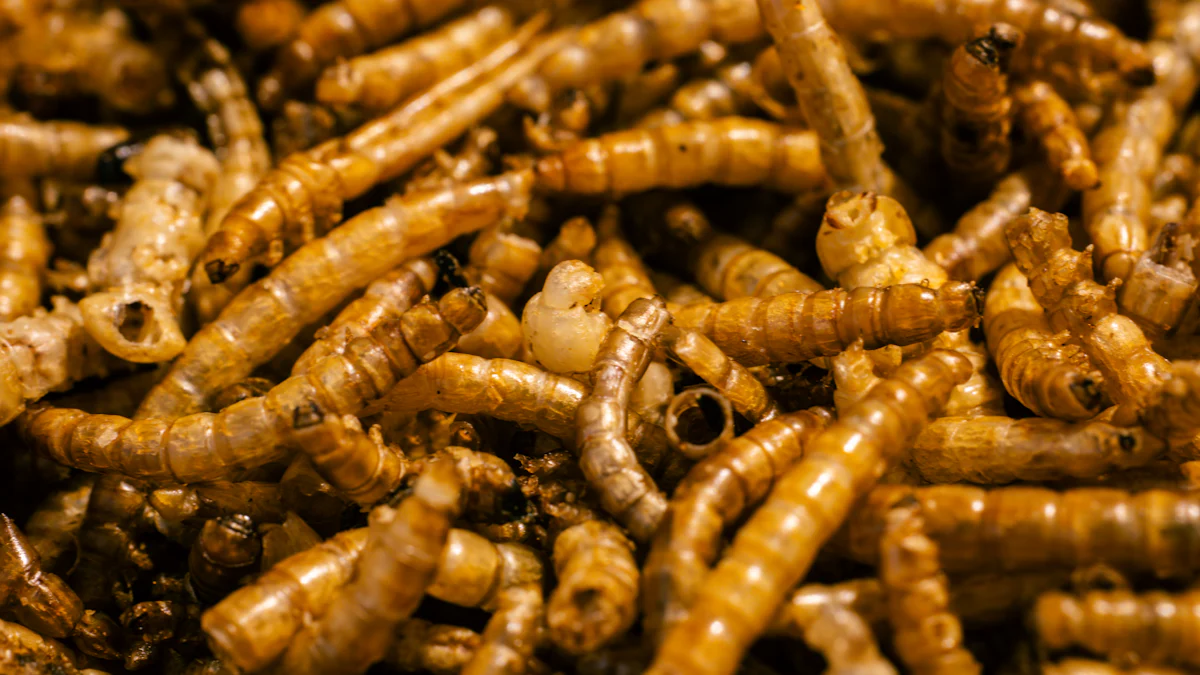
Have you ever wondered why mealworm foods are gaining so much attention? These tiny creatures pack a punch when it comes to nutrition. They’re rich in protein and super eco-friendly. Unlike traditional livestock, mealworms need way less land and water. Plus, they produce fewer greenhouse gases. That’s a win for animals and the planet!
Key Takeaways
- Mealworms are healthy food for many animals like birds, reptiles, frogs, and small mammals. They give important protein and energy, especially in winter or when animals are nesting.
- Feeding mealworms is easy and helpful. You can mix them with bird seeds or feed them healthy food first to make them better for reptiles and frogs.
- Growing mealworms is now more eco-friendly and simple. New ideas like machines and better water use make farming mealworms easier and greener.
Birds That Eat Mealworm Foods

Mealworm foods are a favorite for many birds, whether they’re fluttering around your backyard or living on a farm. Let’s dive into which birds love them and how you can make mealworms a part of their diet.
Common Backyard Birds
If you’ve got a bird feeder, you’ve probably seen some of these feathered friends enjoying mealworm foods. They’re especially popular with insect-eating birds, like:
- Blackbirds
- Robins
- Blue Tits
- Great Tits
- Starlings
- Wrens
During winter, when insects are scarce, mealworms become a lifesaver. They’re packed with over 50% protein and about 25-30% fat, giving birds the energy they need to survive. Nesting season is another critical time. Parent birds need extra protein to care for their chicks, and mealworms provide just that. It’s like giving them a superfood snack!
Poultry and Farm Birds
Farm birds, especially chickens, thrive on mealworm foods. Broilers and layers benefit the most since mealworms are a fantastic protein source. Studies show that many small-scale farmers are switching to mealworms as an alternative feed. They’re not just nutritious; they also boost productivity. However, it’s essential to ensure the mealworms are stored and handled properly to maintain their quality.
Feeding Tips for Birds
Want to attract more birds to your yard? Try mixing mealworms with seed blends or suet. You can even soak dried mealworms in lukewarm water to make them more appealing. For live mealworms, use a shallow container with a perforated lid for air circulation. Adding apples to the container keeps the worms hydrated and fresh. During seasons with plenty of natural food, offering mealworms briefly can still grab birds’ attention.
Mealworm foods are a simple way to support birds, whether they’re wild or on a farm. They’re nutritious, versatile, and easy to use. Why not give them a try?
Reptiles and Amphibians That Eat Mealworm Foods

Mealworm foods aren’t just for birds—they’re a hit with reptiles and amphibians too! These critters love mealworms for their taste and nutrition. Let’s explore which reptiles and amphibians enjoy them and how to feed them properly.
Popular Reptiles
Reptiles are big fans of mealworms. I’ve seen many pet owners use them as a staple in their reptile’s diet. Some of the most common reptiles that thrive on mealworm foods include:
- Bearded dragons
- Leopard geckos
- Crested geckos
- Veiled chameleons
- Blue-tongue skinks
- Green basilisks
Mealworms are packed with protein, which helps reptiles grow strong muscles and shed their skin. They also contain essential fatty acids, like omega-3 and omega-6, which support healthy skin and immune systems. Plus, vitamins A, E, and B complex in mealworms keep their vision sharp and their bodies in top shape. It’s like a multivitamin in every bite!
Amphibians
Amphibians, like frogs and salamanders, also enjoy mealworms. These little guys are insectivores, so mealworms fit perfectly into their diet. Frogs, especially tree frogs, love the wriggling movement of live mealworms. Salamanders, like tiger salamanders, find them irresistible too. Mealworms provide the energy amphibians need to hop, crawl, and thrive.
Feeding Tips for Reptiles and Amphibians
Feeding mealworms to reptiles and amphibians takes a bit of care. I always recommend gut-loading the mealworms first. This means feeding the worms nutrient-rich foods, like carrots or leafy greens, before offering them to your pets. It boosts their nutritional value. Dusting mealworms with calcium powder is another great tip, especially for reptiles that need strong bones.
Be cautious, though. Mealworms have hard exoskeletons that can cause digestion issues, like impaction, if eaten in large amounts. I suggest offering them as part of a varied diet. Live mealworms can also bite, so it’s best to supervise feeding time. For amphibians, use tweezers to place the mealworms near their mouths. It makes feeding easier and safer.
Mealworm foods are a fantastic option for reptiles and amphibians when used correctly. They’re nutritious, easy to store, and loved by many species. Just remember to balance their diet for the best results!
Mammals and Insects That Eat Mealworm Foods
Small Mammals
I’ve noticed that small mammals, like hedgehogs and ferrets, absolutely love mealworm foods. Hedgehogs, for instance, thrive on insect-based diets. Mealworms provide them with the high protein they need to stay active and healthy. Ferrets also benefit from mealworms as a protein-packed snack. They’re easy to feed and make a great addition to their diet. Even some rodents enjoy mealworms as a treat.
Here’s a quick breakdown of how mealworms help small mammals:
| Nutrient | Benefit for Small Mammals |
|---|---|
| High Protein | Essential for muscle development and overall health |
| High Fat | Provides energy and supports healthy skin and fur |
| Nutrient-Rich | Supports dietary needs of small mammals like hedgehogs and ferrets |
Mealworm foods are not just nutritious but also economical. They can reduce reliance on traditional protein sources, which helps save money for pet owners and farmers alike.
Insects
Did you know that some insects also eat mealworm foods? It’s true! Mealworms themselves are often fed to other insects as part of breeding programs. This includes species like crickets and roaches, which are raised as feeder insects for reptiles and birds. Mealworms are a great way to boost the nutrition of these insects, making them healthier for the animals that eat them.
Feeding Tips for Mammals and Insects
Feeding mealworms to small mammals and insects is pretty straightforward. For mammals, I recommend offering mealworms as a treat rather than a main meal. This keeps their diet balanced. You can serve them dried or live mealworms, depending on what your pet prefers.
For insects, mealworms work best as a supplement. If you’re raising feeder insects, try gut-loading the mealworms first. This means feeding the mealworms nutrient-rich foods before offering them to your insects. It’s a simple trick that boosts their nutritional value.
Mealworm foods are versatile and easy to use. Whether you’re feeding a hedgehog, a ferret, or even insects, they’re a fantastic choice. Why not give them a try?
Future Trends in Mealworm Foods
Innovations in Mealworm Farming
Mealworm farming has come a long way, and I’ve noticed some exciting changes in 2025. Farmers are using mesh trays to separate beetles from eggs and substrate. This simple trick prevents beetle cannibalism and makes it easier to prepare trays for new mealworm generations. Another cool innovation is water gel crystals. These replace traditional vegetables as a moisture source, cutting down on labor and storage hassles. It’s a game-changer for large-scale operations.
Automation is also making a big splash. Conveyor and separator systems now handle mealworm harvesting, saving time and effort. Some farmers are even using advanced Insect Production Systems (IPS) to reduce costs and boost efficiency. These upgrades make mealworm farming more sustainable and scalable than ever before.
Sustainable Mealworm-Based Pet Foods
Pet food companies are jumping on the mealworm bandwagon, and I can see why. Mealworm-based pet foods are packed with protein—71%, to be exact—and loaded with essential nutrients like amino acids, vitamins, and minerals. They’re perfect for pets like reptiles, birds, and small mammals.
What’s even better? These foods are eco-friendly. Mealworms need less water, land, and energy compared to traditional livestock. They also produce fewer greenhouse gases. This makes them a great choice for pet owners who care about the planet. Plus, every part of the mealworm gets used, which fits perfectly into a circular economy.
| Feature | Description |
|---|---|
| Sustainability | Uses fewer resources and reduces emissions. |
| Nutritional Quality | High in protein, vitamins, and minerals. |
| Circular Economy | Utilizes all parts of the insect for pet food. |
| Environmental Impact | Lower water, land, and energy usage compared to traditional pet foods. |
Predictions for Mealworm Use in 2025
I think mealworm foods are only going to get more popular. By the end of 2025, the market for mealworms is expected to grow significantly, reaching $17.66 million. That’s a big jump from 2023! More farmers and pet food companies are recognizing the benefits of mealworms as a protein source.
Mealworms are already a hit in animal feed for poultry, aquaculture, and pets. Their high nutritional value and eco-friendliness are driving this trend. With global protein demand on the rise, mealworms are stepping up as a sustainable alternative. I wouldn’t be surprised if they become a staple in animal diets worldwide.
Mealworm foods are a game-changer for animal diets. They’re packed with nutrients and super easy to store. You can refrigerate them for up to 10 weeks, keeping them fresh and ready to use. That’s way more convenient than most other feeds!
Their sustainability is another big win. Mealworms produce fewer greenhouse gases than traditional livestock. They also help reduce reliance on soya bean and fishmeal, making them a smart choice for farmers and pet owners alike.
I believe mealworm-based diets will only grow in popularity. They’re nutritious, eco-friendly, and versatile. Whether you’re feeding birds, reptiles, or small mammals, mealworms are a fantastic option. Why not give them a try?
FAQ
What animals can eat mealworms?
Mealworms are great for reptiles, birds, fish, and small mammals. Wild birds love them too, especially during nesting season. They’re also used as fishing bait.
Are mealworms safe to feed my pets?
Yes! Mealworms meet FDA standards and come with a Veterinary Health Certificate. They’re safe, nutritious, and perfect for your pets’ diets.
Where can I buy high-quality mealworms?
You can find dried mealworms in various package sizes online. They’re affordable, high-quality, and easy to order. Feel free to contact us with questions or advice!


